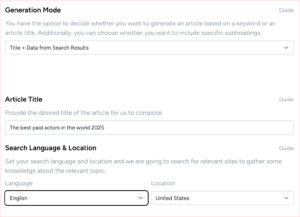If you’re looking to expand your business into a larger global market, you need to be considering translating your website. Not only will this give you an edge over your competitors, it will put your business in front of thousands of new customers, in a language they feel comfortable with.
Research from CSA in 2014 clearly demonstrated that 72.4% of consumers are more likely to buy a product if the website is in their native language. Meanwhile, a whopping 60% rarely or never buy from English language websites with no alternate languages. That’s a lot of business you’re potentially missing out on! Although the research was carried out a few years ago now, it remains indicative of consumer buying habits. You’re more likely to build a good relationship with global clients if you speak their language. It’s only logical.
But we don’t expect you to suddenly learn ten new languages overnight. Utilising a translation service, such as Topcontent, allows you and your employees to focus on what you do best – running your business. Many companies have realised this, and the demand in the global language services industry has more than doubled in the last ten years. More and more people are realising what translation and localisation services can do for their business. More languages equals more customers.
However, we know the cost of translation services can be intimidating. You need to know that the results are going to be worth it. So if you’re wondering how to measure translation ROI, you’ve come to the right place.
Identify KPIs
KPI stands for key performance indicators. These are what you’ll use for measuring translation ROI. Tracking these KPIs will allow you to measure the value of investing in translation services. But remember, translation ROI can often be a waiting game. You might not see immediate growth within 24 hours of your newly translated website going live. But in the long run, using these measures, you should be able to see the benefits clearly.
Traffic
Once your website is translated, you should start to see more traffic on your site. Use Google Analytics to track this. Make sure you’re translating the right aspects. If your business is mainly built on ecommerce, your product descriptions all need to be translated. If you’re running a specific offer, make sure any banners or pop-ups on your landing page are available in multiple languages. Do you use blog posts to incite visitors to buy your products? Don’t forget to translate these too!
Conversion rate
Once you see the stats rolling in for visitors from France, Japan, Russia, or Spain, track the conversion rate. How many of these visitors turned into new customers? This is a critical point of measuring translation ROI.
Advertising conversion rates
Don’t forget about your adverts when considering your translation strategy. How likely are you to click on an ad that you can’t read? Not very likely, is our guess. Target new audiences with multilingual adverts and keep an eye on those conversion rates.
Revenue
Is the revenue generated from your new customers enough to justify the cost of your translation services? We imagine it will be, but still keep track of this to fully appreciate the cost benefits of translations and localisations.
Other ways to measure translation ROI
Translation cost vs quality
Assessing the quality of the translation is another way of measuring translation ROI. Wasting money on poor quality translations is not something any business needs, especially a newer one. It’s tempting to pay cheaper prices for machine-generated translations, but we advise you not to do this.
We talked about the benefits of human-generated content before, and the same applies to translated content. Working with translation professionals ensures fewer errors and natural-sounding translations to appeal to your new global audience and build trust. Which leads us to…
Customer satisfaction

Professional translators can translate as much or as little as you want on your website, but remember that you want to impress. Having FAQ pages, blog posts, and privacy terms and conditions available in multiple languages will help develop trust and loyalty between your brand and global customers.
Competitive advantage
If your website is available in four different languages and your competitor’s is only in English, that gives you an incredible edge already. You’re tapping into markets that your competition hasn’t even considered. This also reflects better on your brand. It shows you care about customers from all over the world, not just Anglophone countries.
Be patient to see the results of translation ROI
As we mentioned before, translation ROI can be a waiting game. But the long-term benefits to your company’s international reputation have the potential to be staggering. The more effort you put into making your site accessible to customers from other countries, the greater the rewards will be.
Concentrating on translating key pages and using multilingual SEO will draw more visitors to your site, expose your business and products to more people, and eventually translate into more customers and increased revenue.
Choose the best translation service
As we have seen, there are many ways to calculate the return of investment from your translation efforts. To achieve the best possible return, you should opt in to work with a professional translation agency. This way you will not only get high-quality and converting translations, but will also save your valuable time when you leave the work to the professionals.
Here at Topcontent, we offer competitive pricing packages that mean you can order more content while paying less. This is excellent news for your budget, and your new clients (but not for your competitors!).
With a team of experienced professionals and 15 languages to choose from, we can help you expand your business globally. We can translate your website to more than 15 different languages, including German, Dutch, Italian, Portuguese and many more!
Contact us today and let’s start to grow your business together!





